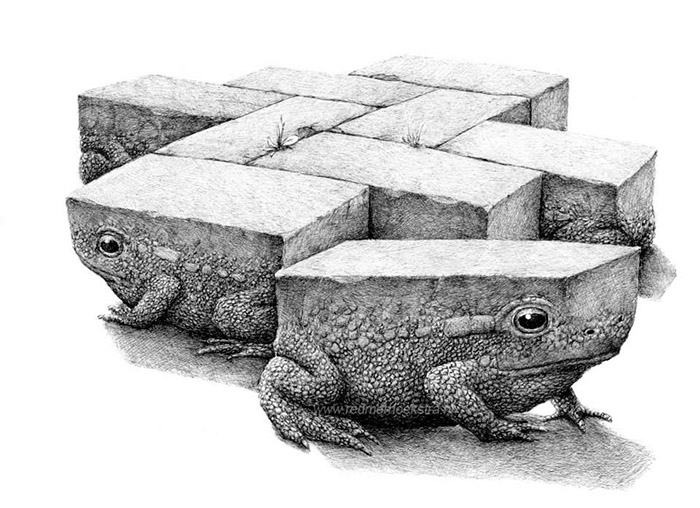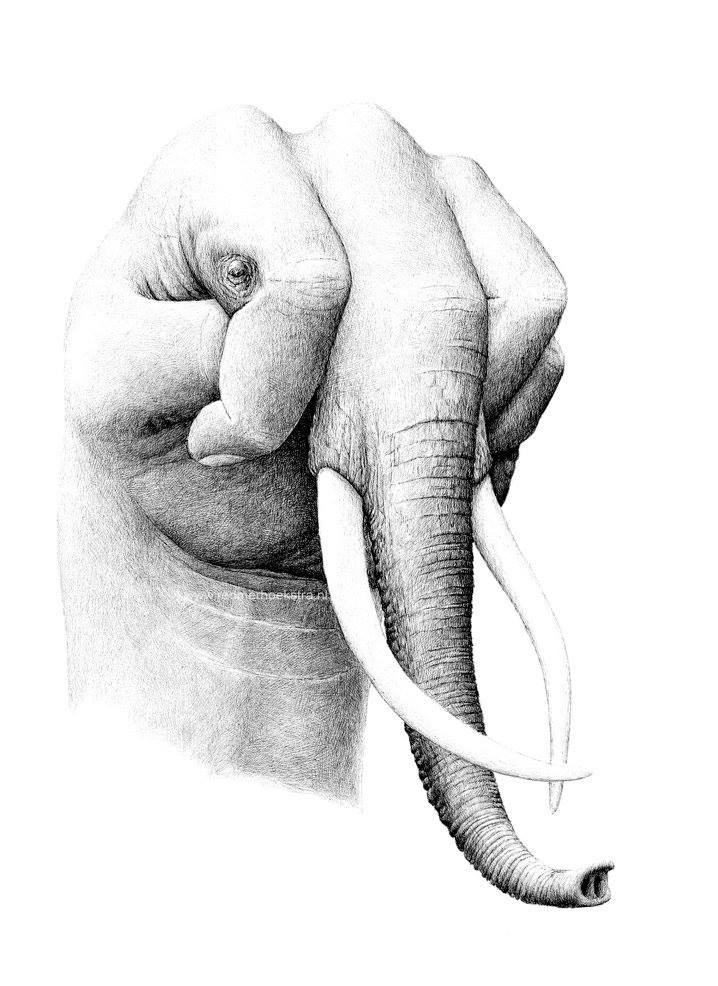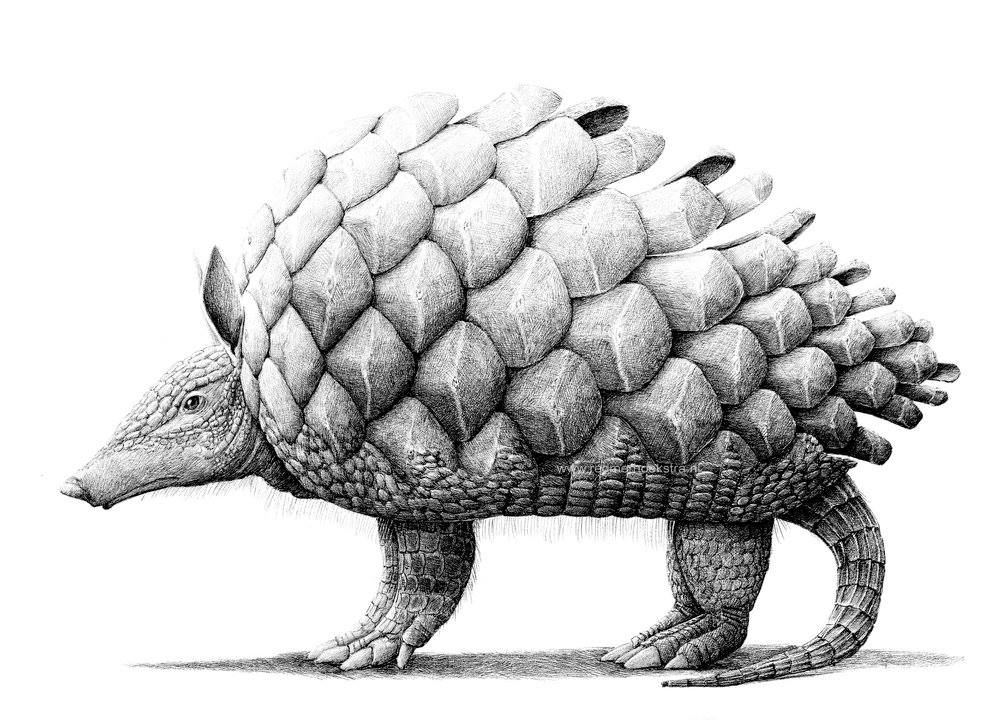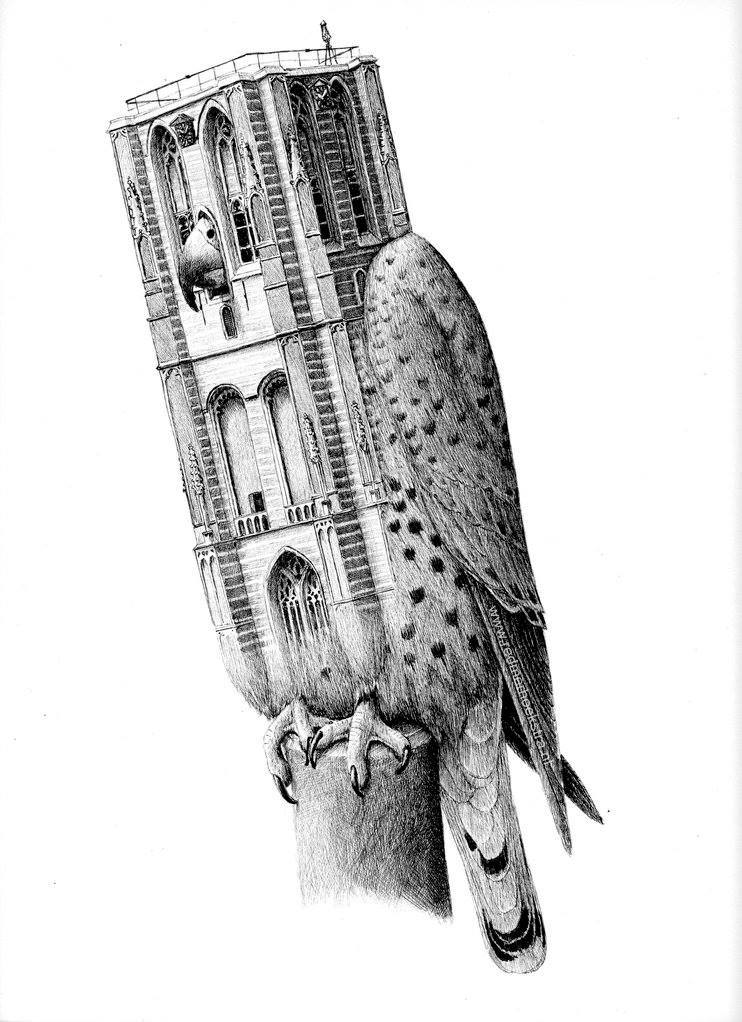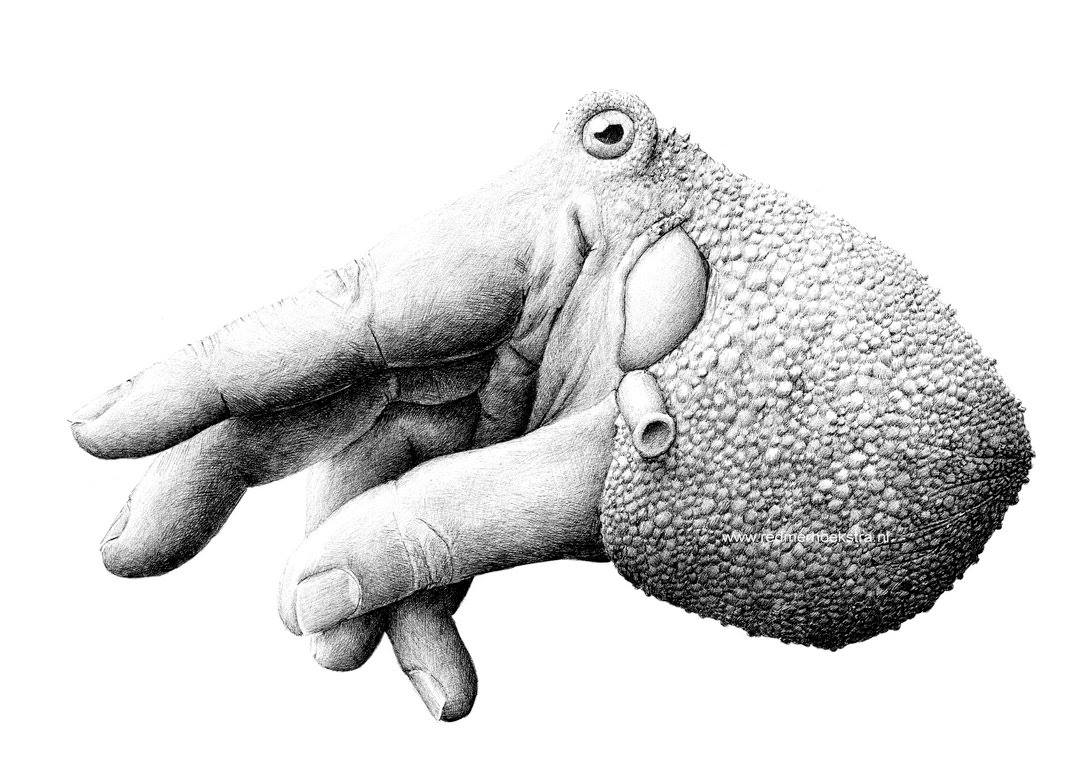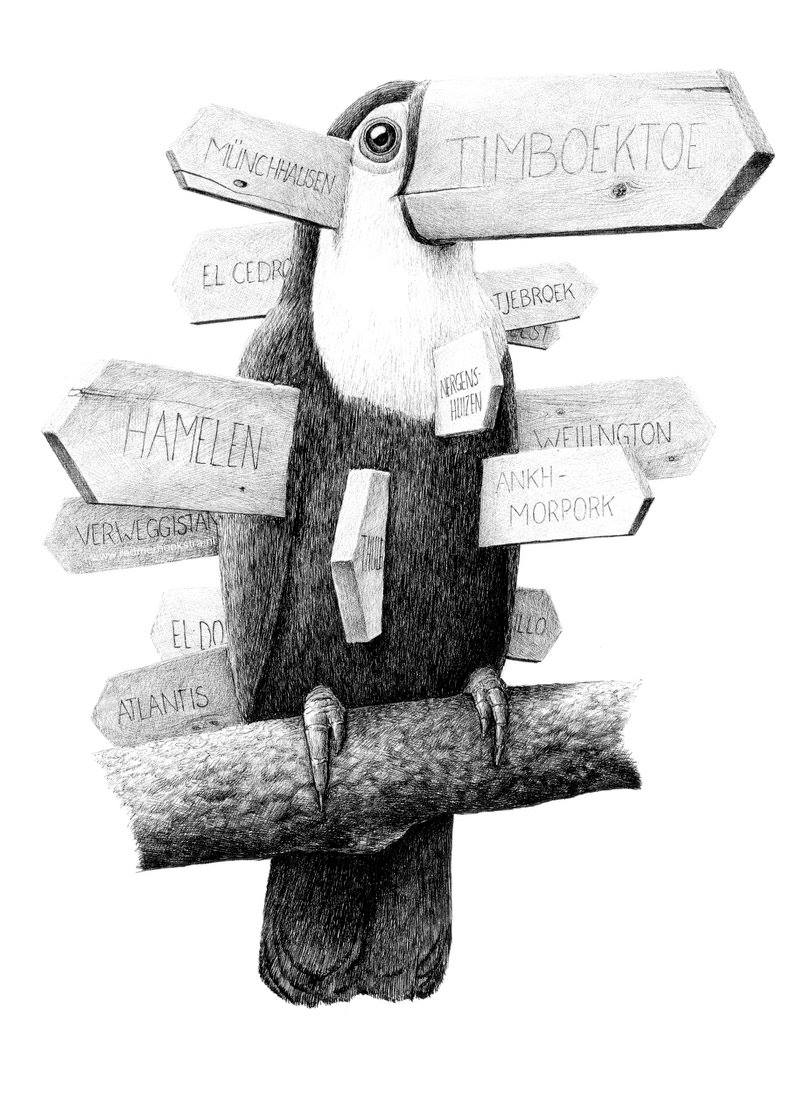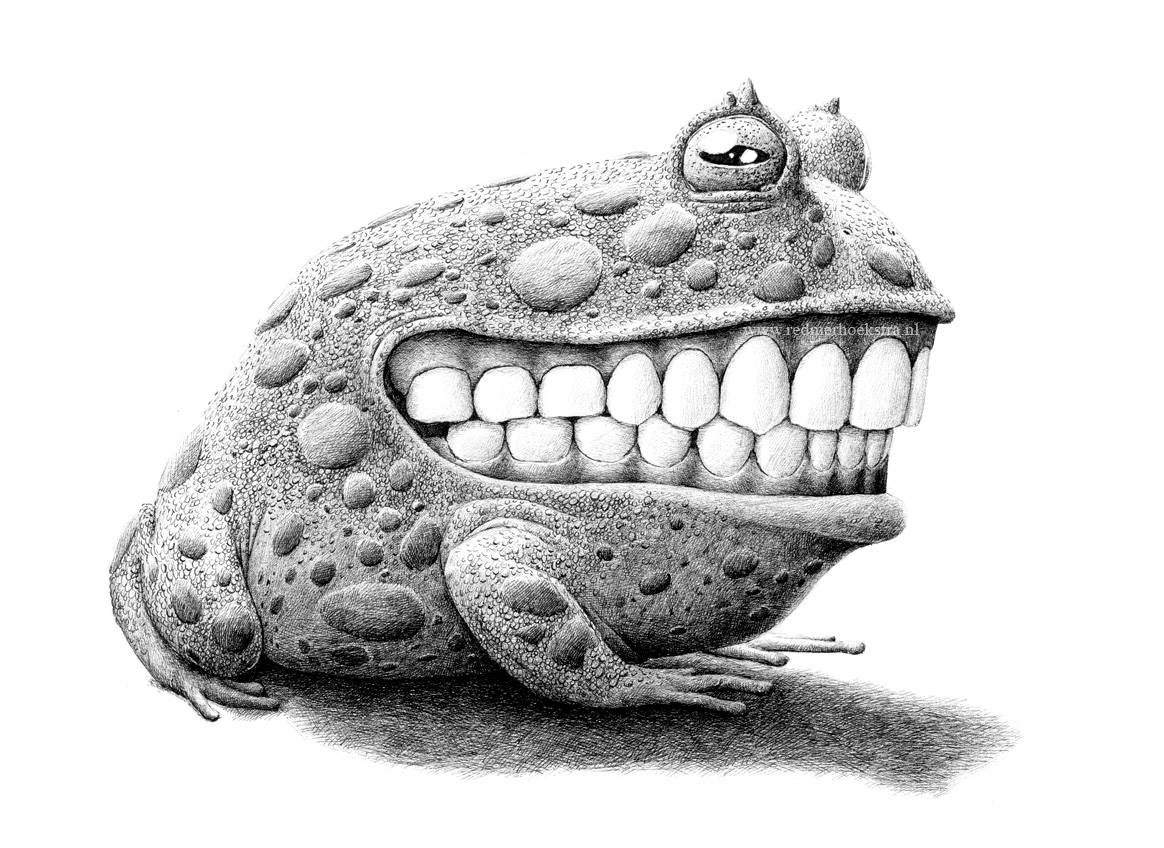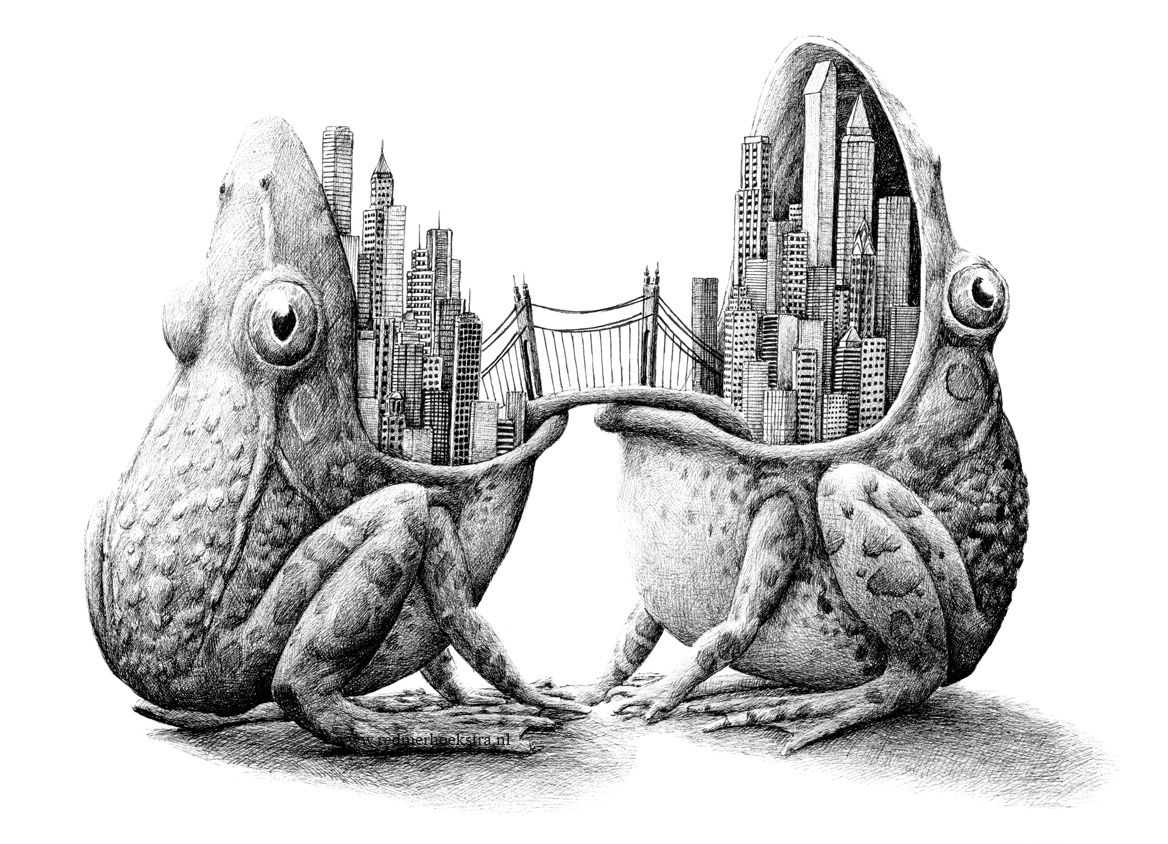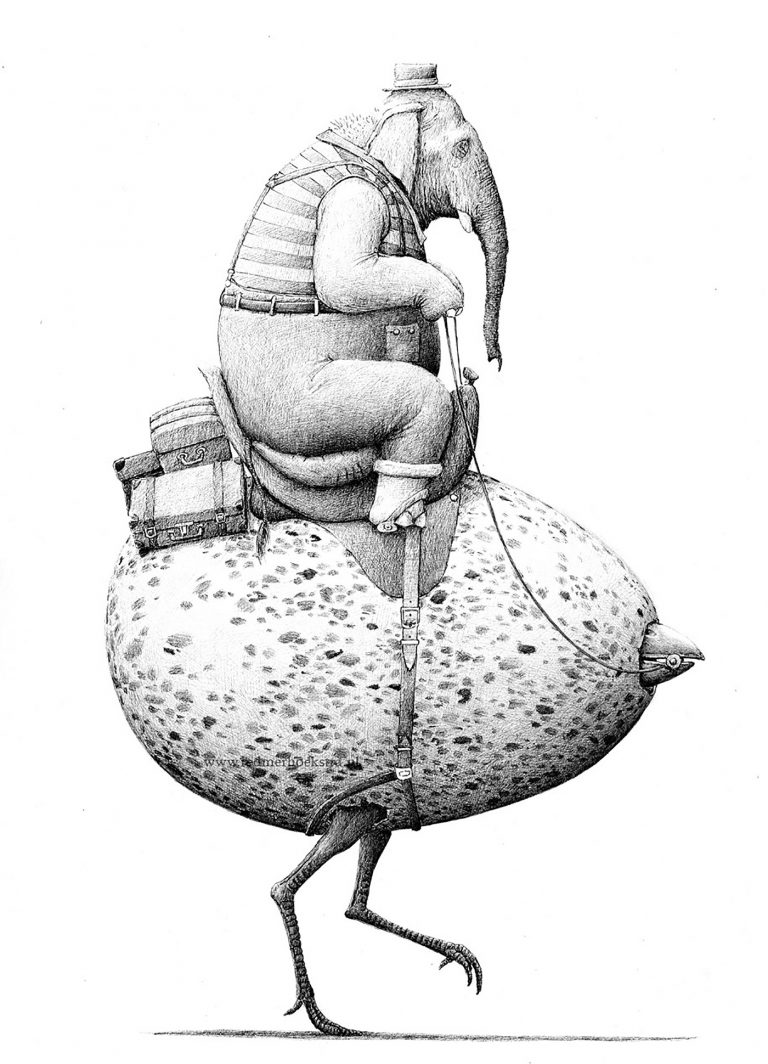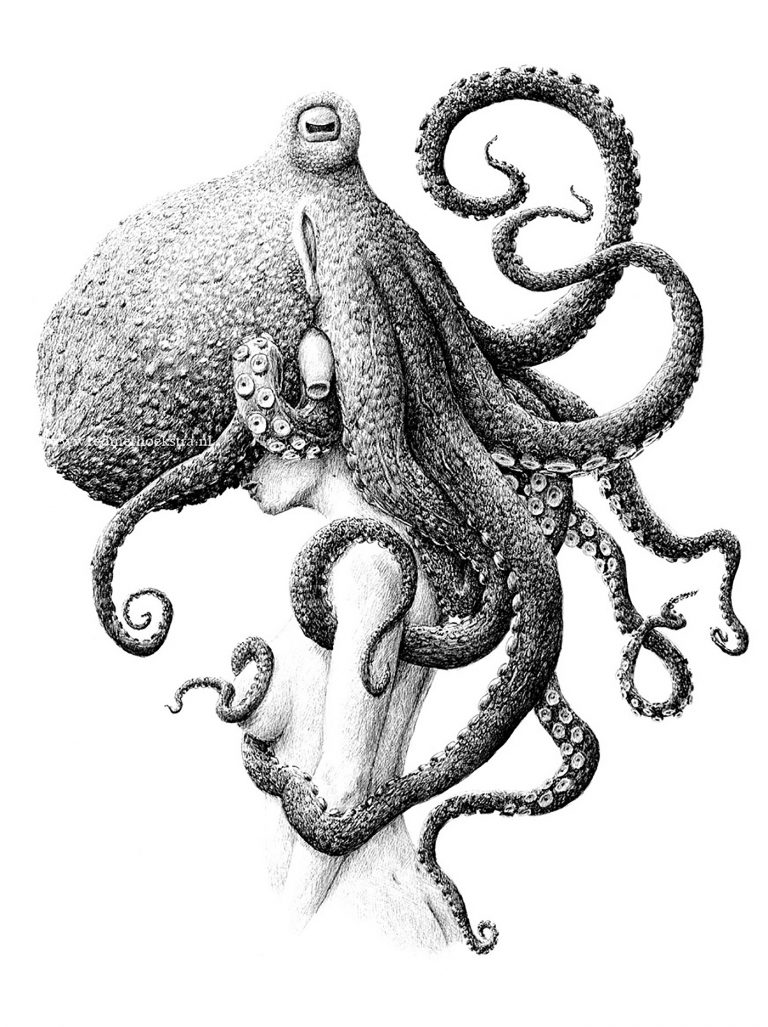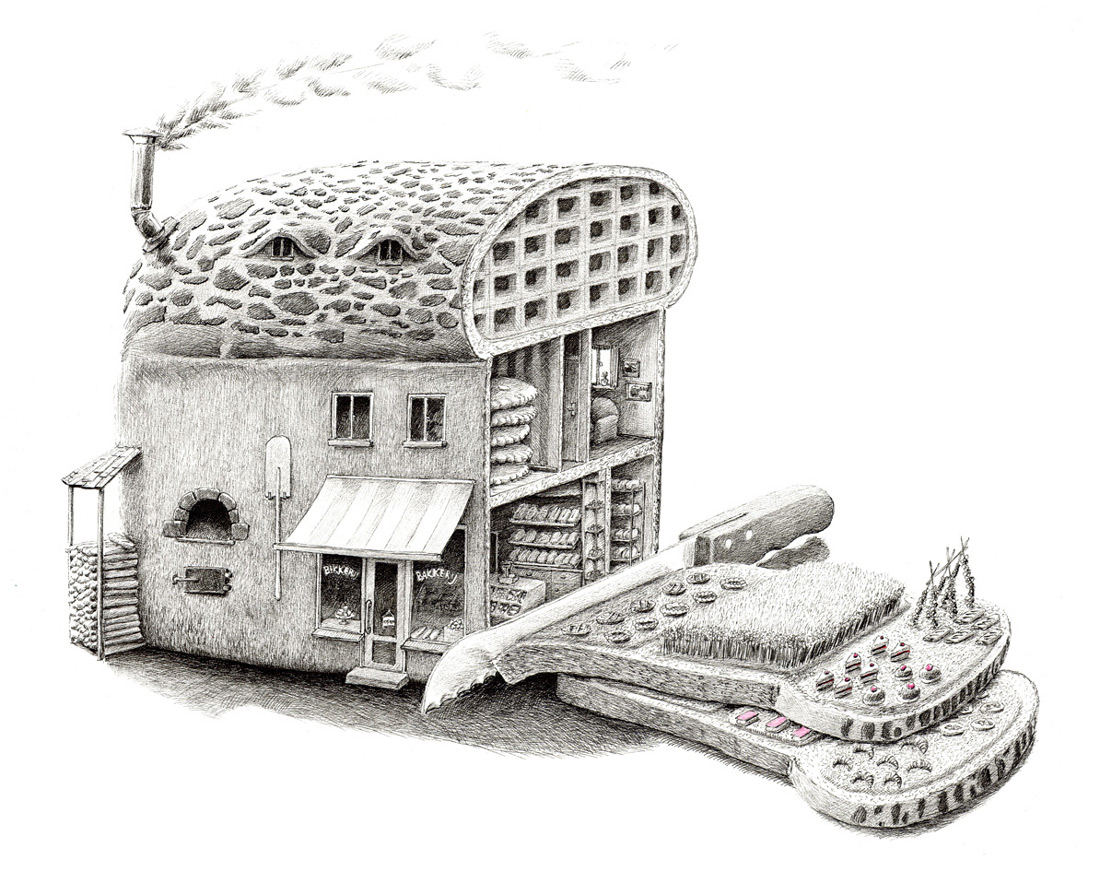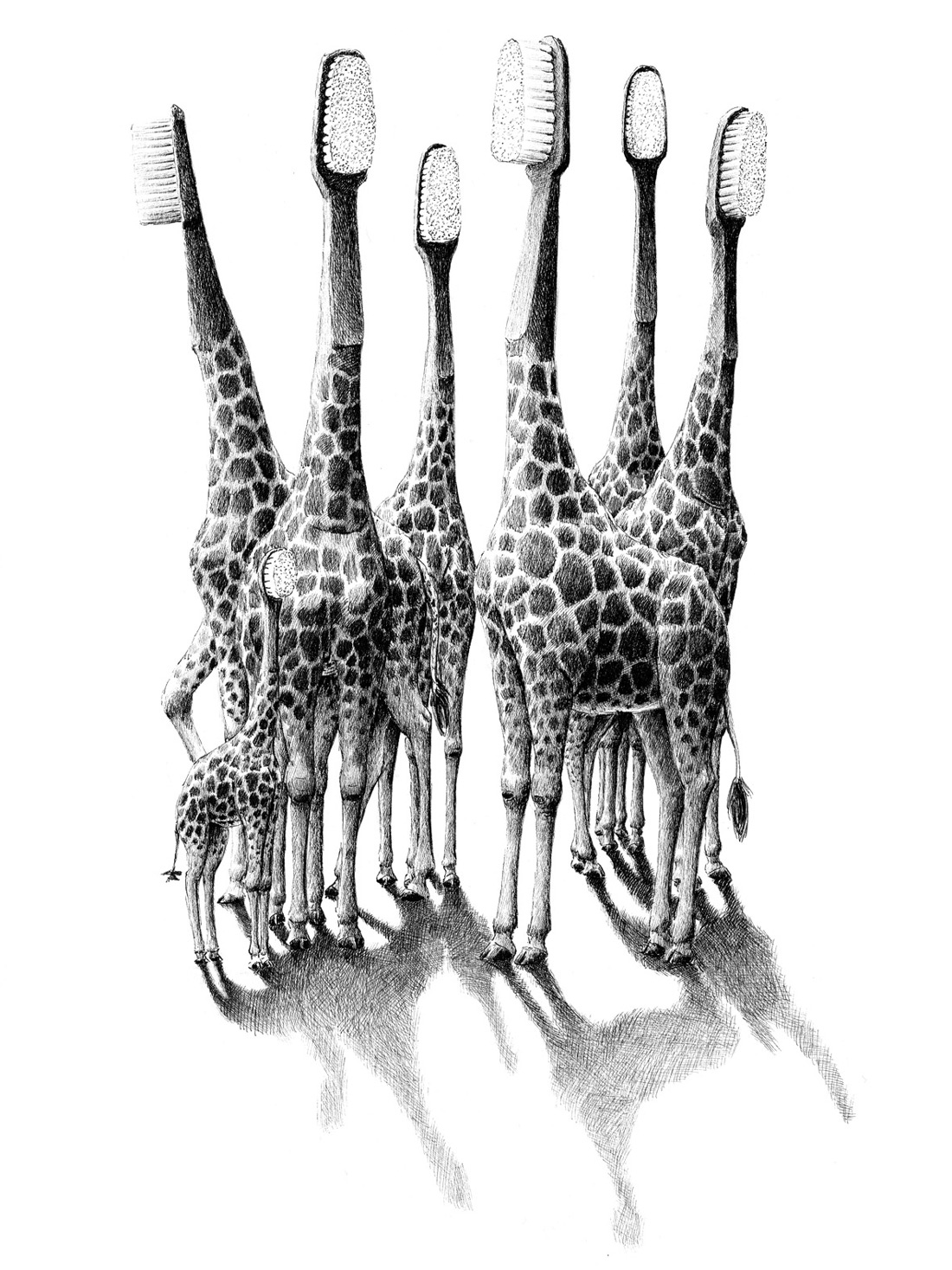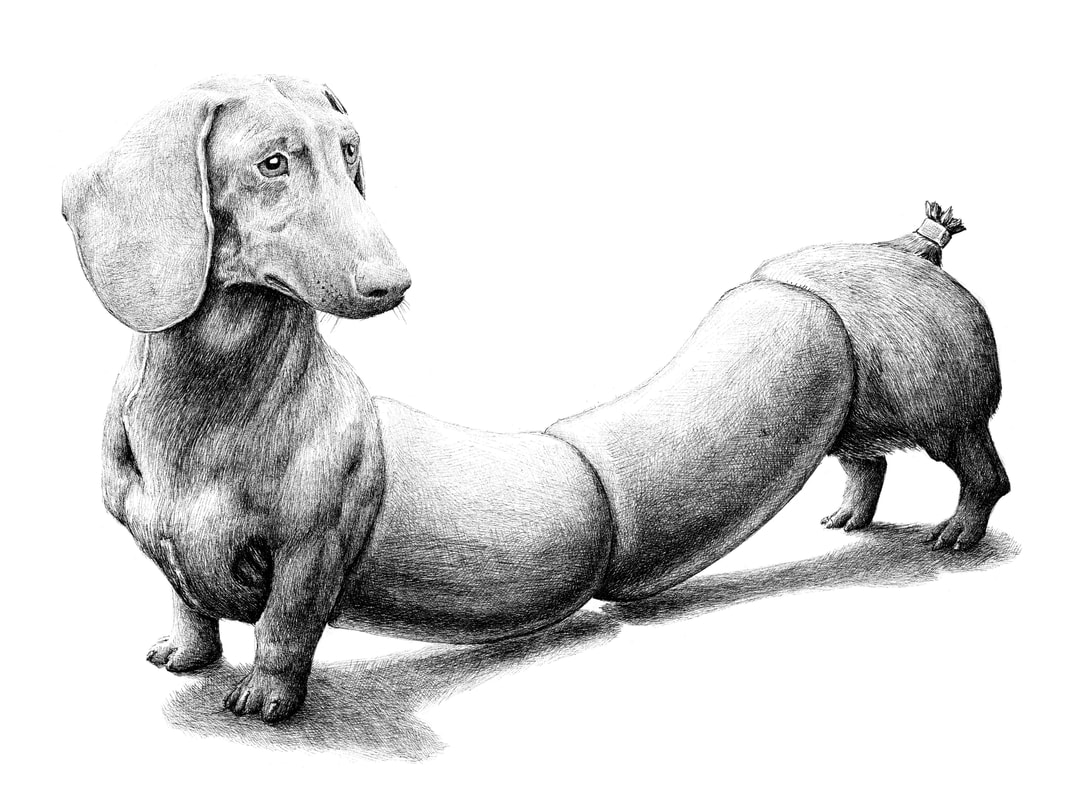REDMER HOEKSTRA
Fine Lines through different dimensions
By:
Thomas Jukes

Fineliner drawings on paper warp and shift before our eyes giving a glimpse into the weird but wonderfully brilliant mind of this Dutch artist. Graduating from the Art Academy in Zwolle, Netherlands in 2009 as a visual artist and illustrator, Hoekstra has not stopped his mind from wondering. Daydreaming is a trait that many schools would probably like to see lessen in the classroom and in their students but if you’re creative it can sometimes be the very best tool for discovering your niche. Redmer has “always loved alienation and fantasizing, daydreaming” and was lucky enough to rediscover this passion during his time at the academy.
Children have a fascinating way of seeing and attempting to understand the world. Without proper explanation, theories run rampant and with a good enough imagination, all sorts of weird and wacky thoughts begin to spiral around in their minds. Many of us are unfortunate enough to lose connection with this fascination of all the things around us. With knowledge and understanding in adulthood comes a loss of this childhood wonder. Redmer is an artist who has whole heartedly embraced this youthful mindset and uses it alongside his talent for illustration to create these surreal drawings.
We can begin to see the artists enthralment for the inner workings of objects and creatures from the day to day to exotic. Extraordinary imaginary worlds are opened up by the artist with his cut away drawings, much like one would see in science museums. However, instead of these machines or animals showing the interior biological or mechanical workings, the artist lets his imagination take over from the real world. We see animals depicted within machinery and humans hidden within animals in an almost scientific drawing style as if we would come across them in a textbook explaining how these things worked. These drawings appear ridiculous as your logical mind steps in to remind you that this is not the way of things but the wonderfully technical drawing style that Hoekstra employs makes them seem so tactile that one could begin to imagine a world flipped on its head where everything we thought we knew was actually untrue.
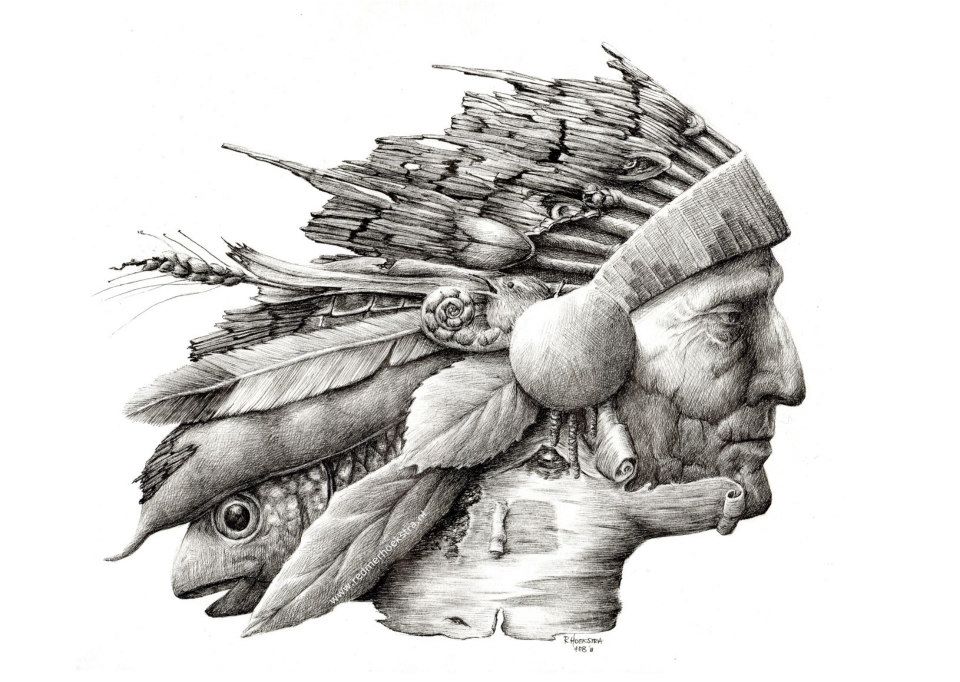
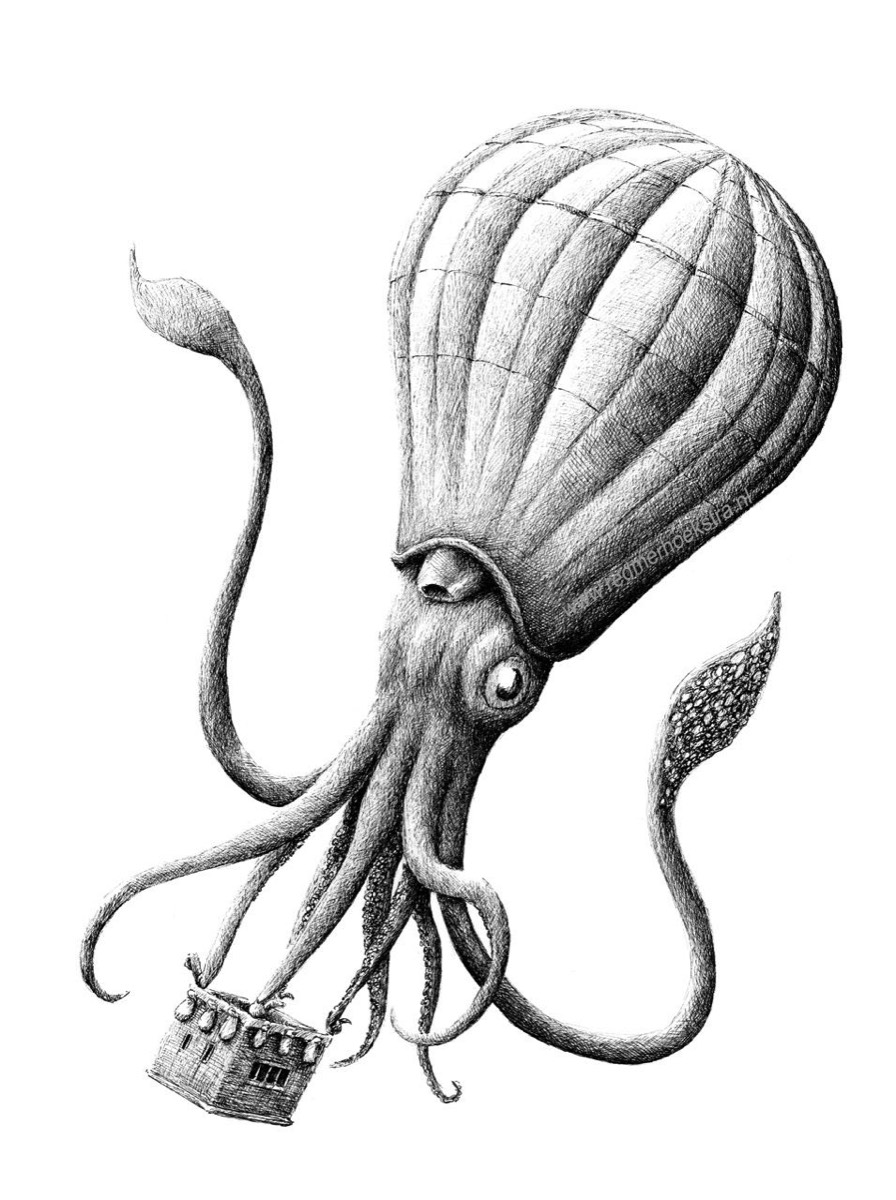
In some ways we could see this as a reverse of the changes that occur to children when they develop these fantastical explanations for the world around them, only to then be taught a different reality that overthrows the imagination and replaces it with cold logic. If someone was to turn around to an adult and explain that sewing machines actually worked by a live woodpecker contained within, it would certainly shatter an element of that person's reality.
A feature that comes through again and again in Hoekstra’s early work is the mixing of anatomical detail with that of inanimate objects, as well as creatures. Whilst initially appearing as sketches from some strange sci-fi cartoon or film moodboard, these drawings come across as slightly disturbing. They are roughly drawn with heavy, scratchy mark making and cross hatched shading further adding to the mad scientist invention atmosphere. The organs and bone structures fit scarily well within these everyday objects and conjure bizarre thoughts on the nature of technology. These appliances have all been invented to do a job which in many cases a human body could do but we have less and less time for in the modern world. So is it so odd to imagine that you would look at the living mechanism first to better understand what you are trying to mimic? I would say no, just that Redmer Hoekstra puts these drawings before us as an unnerving glimpse into how we are making ourselves less and less needed as technology takes on a life of its own.
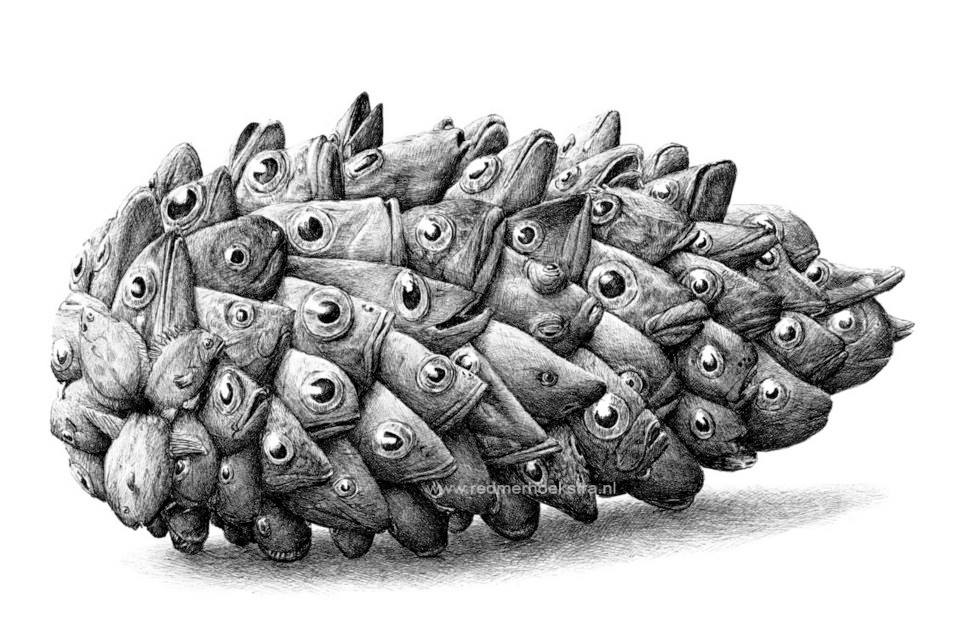
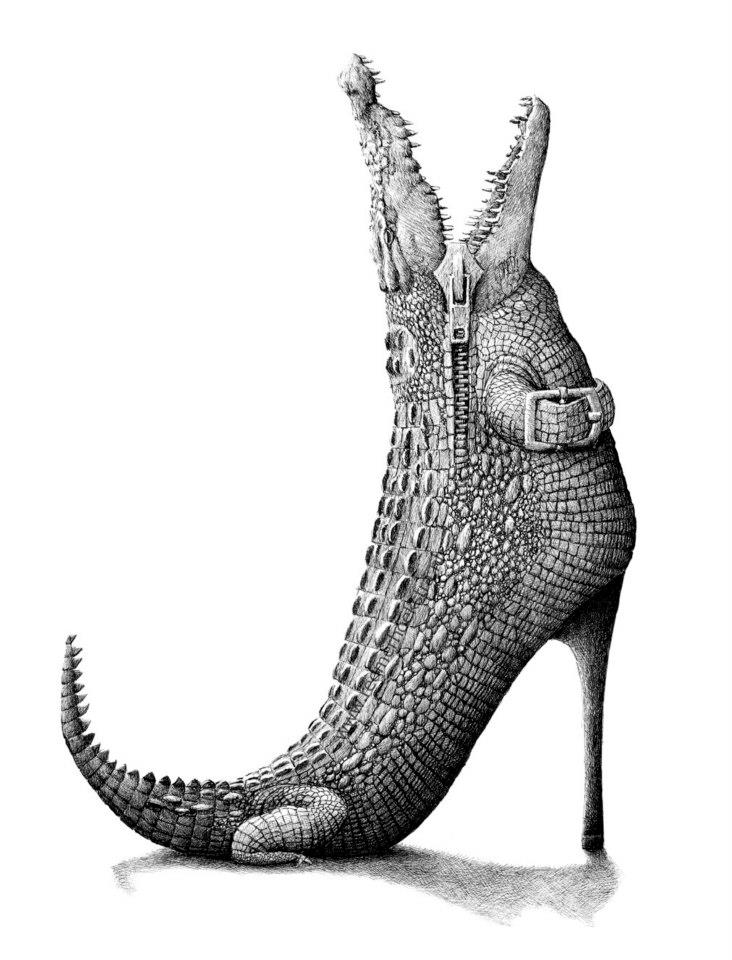
This idea is echoed in the artist's skill at combining human objects with animals, a bird as a whistle, a parrot as a microphone, an octopus as a set of bellows. Human creativity and imagination have taken inspiration from the natural world and replicated their anatomical evolutions to create objects that allow humans to further their own capabilities.
To take Redmer’s work as a message, I feel that it conveys a substantial amount about how we should perceive things. That isn’t to say that we should begin burning text books and ignoring scientific understanding and replace it with whatever we can come up with. More that we should not be so quick to dismiss imagination and the inquisitive nature of the human mind, especially at the critical point of childhood. A logical mind is good but a mind which has both logic and a sense of imagination will be much better suited for finding ways to solve issues in the world.
Often surprising, strange and funny but also with a strange kind of logic, in a fantastic and surreal world
